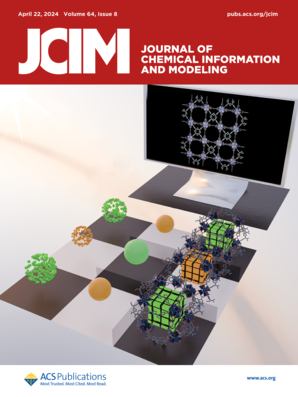Vina-CUDA: An Efficient Program with in-Depth Utilization of GPU to Accelerate Molecular Docking.
IF 5.6
2区 化学
Q1 CHEMISTRY, MEDICINAL
引用次数: 0
Abstract
As a mainstream technology in modern drug discovery, molecular docking methodologies enable precise and efficient identification of lead compounds within large chemical repositories to improve drug development efficiency and reduce costs. The exponential growth of chemical databases has substantially expanded drug discovery resources while improving the identification rates of true positives in lead compounds. However, this rapid expansion poses significant challenges for existing docking tools to efficiently screen lead compounds from these massive chemical libraries. In this study, we proposed Vina-CUDA, which leverages GPU hardware features to optimize and accelerate the core algorithm of the popular tool AutoDock Vina at three aspects, computational capability, memory access, and resource utilization, significantly improving docking efficiency. A hybrid parallel optimization strategy integrating task and computational parallelism was implemented, accompanied by systematic code and data structure optimization, to maximize GPU resource utilization and enhance computational efficiency. Building upon this, we developed its derivatives, QuickVina2-CUDA and QuickVina-W-CUDA, as well as a user-friendly multi-GPU docking framework to utilize multi-GPU resources to accelerate large-scale virtual screening tasks. The performance and docking accuracy of Vina-CUDA and its derivatives were evaluated under five chemical databases. Results showed that, compared to baseline programs, Vina-CUDA with RILC-BFGS optimization algorithm achieved average and maximum accelerations of 3.71× and 6.89× across five databases, while QuickVina2-CUDA and QuickVina-W-CUDA achieved average speedups of 6.19× and 1.46×, respectively, without compromising docking accuracy. Furthermore, Vina-CUDA and its derivatives demonstrated comparable performance to baseline docking programs in docking, scoring, and ranking power, with excellent scalability and portability.Vina-CUDA:一个深度利用GPU加速分子对接的高效程序。
分子对接方法作为现代药物发现的主流技术,能够精确、高效地识别大型化学库中的先导化合物,从而提高药物开发效率,降低成本。化学数据库的指数级增长极大地扩展了药物发现资源,同时提高了先导化合物的真阳性识别率。然而,这种快速扩张对现有对接工具提出了重大挑战,无法有效地从这些庞大的化学文库中筛选先导化合物。在本研究中,我们提出了Vina- cuda,利用GPU硬件特性,从计算能力、内存访问和资源利用率三个方面对目前流行的AutoDock Vina工具的核心算法进行优化和加速,显著提高对接效率。采用任务并行和计算并行相结合的混合并行优化策略,对代码和数据结构进行系统优化,最大限度地提高GPU资源利用率,提高计算效率。在此基础上,我们开发了其衍生产品QuickVina2-CUDA和QuickVina-W-CUDA,以及一个用户友好的多gpu对接框架,利用多gpu资源加速大规模虚拟筛选任务。在5个化学数据库下评价了Vina-CUDA及其衍生物的性能和对接精度。结果表明,与基线程序相比,采用RILC-BFGS优化算法的Vina-CUDA在5个数据库间的平均和最大加速度分别为3.71 x和6.89 x,而quickvin2a - cuda和QuickVina-W-CUDA在不影响对接精度的情况下,平均加速度分别为6.19 x和1.46 x。此外,Vina-CUDA及其衍生产品在对接、评分和排名能力方面表现出与基线对接程序相当的性能,具有出色的可扩展性和可移植性。
本文章由计算机程序翻译,如有差异,请以英文原文为准。
求助全文
约1分钟内获得全文
求助全文
来源期刊
CiteScore
9.80
自引率
10.70%
发文量
529
审稿时长
1.4 months
期刊介绍:
The Journal of Chemical Information and Modeling publishes papers reporting new methodology and/or important applications in the fields of chemical informatics and molecular modeling. Specific topics include the representation and computer-based searching of chemical databases, molecular modeling, computer-aided molecular design of new materials, catalysts, or ligands, development of new computational methods or efficient algorithms for chemical software, and biopharmaceutical chemistry including analyses of biological activity and other issues related to drug discovery.
Astute chemists, computer scientists, and information specialists look to this monthly’s insightful research studies, programming innovations, and software reviews to keep current with advances in this integral, multidisciplinary field.
As a subscriber you’ll stay abreast of database search systems, use of graph theory in chemical problems, substructure search systems, pattern recognition and clustering, analysis of chemical and physical data, molecular modeling, graphics and natural language interfaces, bibliometric and citation analysis, and synthesis design and reactions databases.

 求助内容:
求助内容: 应助结果提醒方式:
应助结果提醒方式:


